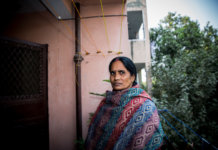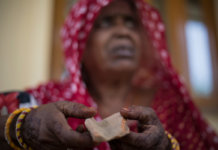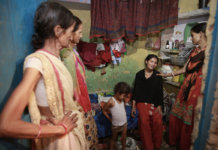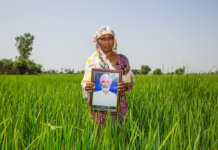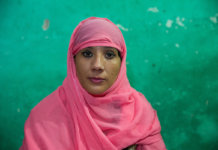A group of teenage Muslim girls in India are excelling in Martial Arts as self-defence to avoid being kidnapped on their way home from school.
Young girls aged between six and 16-years-old, clad in traditional hijabs and long tunics, are able to perform jaw-dropping stunts using swords and sticks.
But the girls admit it’s a need in order to be able to look after themselves against ‘rapists and sex-traffickers’ in their country.
For an hour every day they practise at their Saint Maaz High School, in Hyderabad, southern India, and they believe they can defend themselves against any man that tries to snatch them on their way home from school or playing outside their home.

Student Mirose Tabasum, 16, said: ‘I’ve been learning Vovinam for the last three years and with regular practice I’ve emerged as a very strong and confident girl.’
‘I just love this form of Martial Arts.’
‘It not only keeps me fit but also gives me the confidence to ensure I will never be harmed by anyone.’
Coach Mir Wahaj Ali Khan, 28, organises the classes for 60 of his students at 10am every morning because of the increasing rate of crimes against women in India.

‘It’s one of the most efficient forms of self-defense and I’m glad it’s gradually picking up pace in India,’ he said. ‘I learnt it at a very young age and I want to pass on the benefits of such self-defence skills to the younger generation of my country. I have been encouraging the students to take up Vovinam as it teaches discipline, self-defence and keeps the body fit.’
Girls as young as six can learn self-defence techniques that include combat and traditional wrestling, punching, kicking and even a ‘folding fan’ move popular in self-defence.

It’s the stunning techniques that Mir Wahaj feels attracts the young girls to his classes.
Mirose’s interest and skill in Vovinam has grown so much her parents feel more at ease when she’s out on the streets of Hyderabad.

Her mother Mehrunisa Tabasum, 39, said: ‘It’s really disturbing that girls are unsafe on our streets. We all know that traffickers are desperate to pick up little girls and sell them into the sex trade. We are not safe in our country and I feel parents should give some kind of self-defence training to their daughters. I feel so much more confident that Mirose is learning Martial Arts and she can take care of herself. She commutes to school with other students but I am never apprehensive of her safety any more.’
‘I know she can at least punch and kick a man if he tries to harm her.’
Vovinam originated in Vietnam in 1938 and is slowly spreading across India as an efficient method of self-defense after Karate and Wushu.

India is a prime area for child trafficking for reasons such as labour, begging, and sexual exploitation because of economic deprivation, lack of employment opportunities, social status, and political uprisings.
According to a report by the National Human Rights Commission of India, just 10% of human trafficking in India is international, while almost 90% is interstate. Nearly 40,000 children are abducted every year and 11,000 remain forever untraced.

